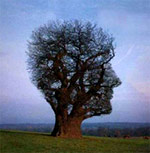How to cure stroke (part 1)
The appropriate and most common means of Stroke treatment
Stroke is the most serious brain damaging accident happening in humans life. In countries with developed economy such as USA and Western Europe the statistics reveals that by end of this century the leading causes of mortality in accordance with accounting figures in its overall structure comprise of about 14% of those being in the risk group. Brain stroke defines more than 30% of all deaths from cardiovascular disease. This is primarily due to the aging population, because disease are predominantly diseases of elderly and senile age.
Factors contributing to the development of vascular diseases of the heart and brain are the conditions of modern life especially connected with ecological situation and urbanization leading to automation, nerve strain in work processes and the lack of motor activity combined with the growth of diabetes mellitus and features of modern nutrition, increased alcohol consumption.
The growth rate of death from cardiovascular disease in the last decade was the highest for the middle age group. Thus, according to DA Markov (1986) amongst the group of patients with brain infarction 23.6% who were aged 41-50 years and 12,8% being younger than 40 years. Hence, the stroke affecting half of the patients has reached the age of 60 years i.e. affects people still full of energy and opportunities. Moreover, death rate was somewhat exceed in terms of the data regarding 40%. The majority of survivors become disabled and require long-term rehabilitation treatment, and often outside care.
Thus, the struggle with cerebrovascular diseases, their prevention and the treatment for occupational rehabilitation seem not so much in terms of a medical problem, many medical and social like significance for the state and its economy.

Progress in addressing the problem of cerebrovascular pathology has emerged in recent years (after 2005), is associated primarily with the successes in uncovering the mechanisms of regulation and the dynamics of cerebral blood flow by introducing new methods of investigation Somewhat great range of importance has to be considered for the diagnosis of stroke is a method of computerized tomography (CT) studies of the brain. The results of these studies, on the one hand, revealed a major role extracranial lesions departments of major vessels of the head, set the value of collateral circulation in occlusion of cerebral vascular lesions, found the original “steal syndromes and their clinical expression, on the other hand, allowed us to formulate the position of the cerebral vascular insufficiency and propose new methods of pathogenetically based treatment, even surgery. As a result for that, it might be unable to return to the working process for patients in the recent past were considered hopeless.
At present, we are able actually with active working lifestyle expand the diagnosis and treatment of early forms of cerebral vascular pathology, which will significantly reduce the number of acute disorders of cerebral circulation (i.e. stroke) and slow clinical evolution of chronic disorders of cerebral hemodynamics (as so-called dyscirculatory encephalopathy).
The peculiarity of the cerebral circulation is the relative stability of distinct structures of the cerebral vessels and perfection of regulation of cerebral blood flow. The intensity of metabolic processes in the brain tissue is such that if the mass of the brain is approximately 1400 g, which represents about 2% of body weight, it consumes approximately 20% of the total oxygen and 17% of the total glucose entering the body. If coronary blood flow during physical exercise increases 10-15 times or more, the cerebral blood flow during intense mental activity in general does not increase, just redistributed from less active areas of the brain in functional terms, in an area with intense activity. Thus, the pattern of cerebral blood flow is moving with a continuously changing mosaic of local blood flow in different areas with a relative constancy of the total blood flow to the brain. Of course, the decrease in total blood flow to the brain (myocardial infarction or falling systemic blood pressure) leads to the disruption of the regulation of cerebral hemodynamics and impairment of cerebral circulation (NMC). However, most often in the pathogenesis of NMC are factors affecting the change in intracerebral hemodynamics. The redistribution of blood in the vascular system of the brain in favor of its active regions, of course, with less damage to the active sites can cause temporary ischemia of the latter, ie, underlie transient NMC. The circulation by a number of complex and intracerebral vnetserebralnyh regulatory mechanisms. The former include myogenic, neurogenic, neurohumoral and metabolic mechanisms.
The second group of regulatory mechanisms associated with the activity of the carotid sinus node depressor nerve, the contractile function of the heart. Violations of these regulatory mechanisms occur when changing the level of systolic blood pressure below 80 or above 180 mmHg. The minimum critical level considered to be 60 mm Hg, below this value occur is a violation of self-regulation of cerebral blood flow, slowing it to individual vessels with subsequent ischemization brain tissue and insufficient collateral circulation – ischemic stroke (cerebral infarction). In some cases, after the restoration of blood flow in the ischemic zone pH value remains low because of metabolic acidosis due to accumulation of lactic acid. This leads to further vasodilatation and cerebral blood flow remains high, although the functional requirements in this anymore. Naturally, the utilization of oxygen is not fully, so the flowing blood is red. This phenomenon is referred to as syndrome of abnormal perfusion, due to a violation of the metabolic mechanism of self-regulation of cerebral blood flow.
Posted in Head and Brain